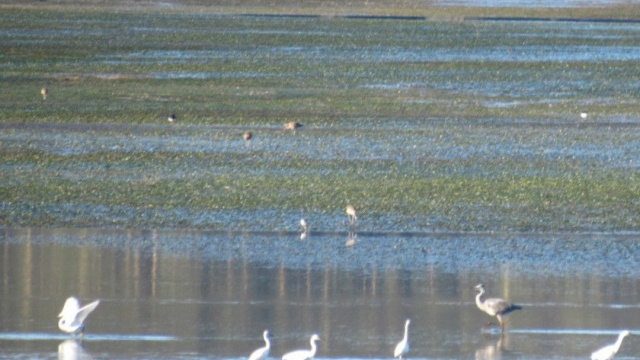Ornithology

RÍA DE ORTIGUEIRA AND LADRIDO
This coastal area of great beauty is an ideal place for the observation of farids, waders and ducks. The Ria de Ortigueira is an area of great ecological importance, protected as a Spatial Conservation Area (Red Naturs 2000) and as a RAMSAR International Wetland Area. It presents different nábitats (fluvtales niberas, mertermes, llanures intermareales... and therefore, the observation points are varied and offer many options, for what it is worth the trouble to cross calmly the entomo, including iss beaches and wooded fields prosimos to the ria. The Port of Cariño is an excellent place to watch seagulls. Up to 18 species of läridis have been observed here, and in winter some rare gulls such as the polar gull, the hypertiores, and the red-legged sandpiper, which can be found among the stones of the breakwaters, are often seen here. Other species such as oystercatchers and sandpipers are also common. Ortiqueira Harbour. During low tide this is an extraordinary observation point. The huge intertidal flats offer food for different species of waders such as the black-tailed godwit, black-tailed godwit, common and common redshank, common sandpiper, grey plover, sandpiper, common crested sandpiper, trilling curlew and curlew. The latter maintains one of the best wintering populations in the north of the Iberian Peninsula. You can also find loons, black-necked godwits, black-necked grebes and groups of spoonbills feeding in the channels of the river. Morouzos beach and Ladrido inlet. During the autumn migration, different species of waders use this channel to feed. In winter, most of the waders of the river rest during the high tide in Ladrido inlet, and spectacular flocks of curlews, grebes, sandpipers and oystercatchers can be observed. Herons and Little Egrets are also common. Among the reeds we can see the common snipe and in September it is not rare to see the blue-breasted grosbeak or the northern wigeon.










